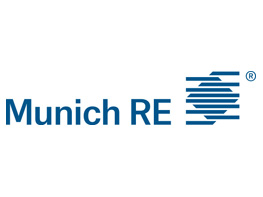Brokers
Getting There Faster

It has been an uphill climb for the insurance industry to incorporate faster and more efficient technology into its systems. And perhaps no segment of the industry is under more pressure to get this challenge right than agents and brokers.
“What we are finding out is that brokers, agents, wholesalers and insurers are all in this race to utilize technology better,” said Kabir Syed, CEO of Greenwich, Conn.-based RiskMatch.
But Syed said the different sectors are too siloed.
“Our industry is not very efficient at integrating multiple systems together,” said Syed, who was managing director, strategy and operations for Marsh’s U.S. global risk management business prior to launching RiskMatch two years ago.
RiskMatch was founded as an analytics firm delivering a suite of web-based solutions for insurance brokers and underwriters throughout the United States.
The brokerages, as hard as they are working to get it right, agree that their industry in general is not a leader in the area of using technology to serve customers.
“At a high level, this industry has lagged behind other industries that are more data and information rich in realizing some of the technology opportunities,” said Patrick Donnelly, the Chicago-based chief broking officer of the Financial Services and Professional Group at Aon Risk Solutions.
Cyber Shopping
Certain sectors of the industry have found it easier to keep pace with technology. Many small businesses are now able to buy their commercial insurance direct online. It was probably only a matter of time — personal lines such as auto have been sold directly for many years.
“Small business owners in particular are more savvy. They understand their business better than anyone.”
— Tom Kavanaugh, partner, PricewaterhouseCoopers
“We’re seeing more of a propensity, especially in small commercial businesses, for a willingness not only to shop around more but to use a direct channel versus historically what was much more driven by agent and broker activity,” said Tom Kavanaugh, Chicago-based partner, Financial Services Practice at PricewaterhouseCoopers (PwC). “Small commercial is beginning to act more and more like individual consumers.”
Overall, there’s much more information available online and through digital channels, and financial IQs are growing, so there’s more willingness to have a more self-directed shopping experience than in the past, Kavanaugh said.
“You’re beginning to see more and more activity, particularly at the early stages of the process in terms of the research component,” said Kavanaugh.
“Small business owners in particular are more savvy. They understand their business better than anyone,” he said.
Hiscox USA was the U.S. pioneer in direct online sales of insurance policies to business. New York-based Kevin Kerridge, the company’s head of small business insurance set up and ran Hiscox’s direct-to-business operation in the U.K. for 10 years before taking on the challenge of establishing a similar enterprise in the United States in 2010.
“Ninety percent of the policies we sell through our online service are first-time buyers of business insurance,” said Kerridge. “And I know the reason for that. If you’re a small business and suddenly you figure out you need, say, errors and omissions coverage or general liability, today most of these people are so plugged into online technology that the first thing they’ll do is Google the subject rather than go through an agent who does their car or their home insurance.”
Half of Hiscox USA’s first-time business goes through a digital channel without touching a human being, Kerridge said.
“Within 20 minutes, they get their policy document online. Through other channels, that could take a week to accomplish,” he noted.
Google is obviously key for Kerridge’s business. “We want to be highly rated on natural search rather than through ads. Anybody can buy an ad,” he said.
But agents aren’t excluded from this approach, far from it.
In the last year, Kerridge said, his firm has started to leverage its direct sales technology by giving agents instant access to the same products consumers can buy on its website.
“Outside agents are selling hundreds of Hiscox policies each week through Hiscox online wholesale portals,” he said.
The Social Channel
Social media is another area where some brokers are getting it right.
Just last month, Risk & Insurance® gave a Power Broker® award to Denton Christner, a vice president with BayRisk Insurance Brokers, who founded insuremyfoodtruck.com in mid-2012.
Nine months into 2013, the site had more than 7,000 unique visitors. The site receives between 60 and 125 quote requests per month and is serving 400 mobile food vendors in multiple states, he said.
Christner connects with his customers via social media outlets such as Facebook, Twitter and Instagram to get to know them personally and find out more about their businesses.
“Social media is a way to build word of mouth, to capitalize on positive reviews from people who have used us.”
— Kevin Kerridge, head of small business insurance, Hiscox.
Some carriers are also employing social media to bolster their marketing efforts.
“Social media is a way to build word of mouth, to capitalize on positive reviews from people who have used us,” said Hiscox USA’s Kerridge.
“I have a dedicated social media person on my team. We took a gamble early on with social media — Facebook, Twitter and LinkedIn — to monitor and influence conversations about our company and our products.”
Education and Branding
Added PwC’s Kavanaugh, “You’re seeing agents leverage technology more and more across the entire customer lifecycle. You’re seeing agents use social media platforms for prospecting and customer acquisition.”
Sites like YouTube are being utilized for different educational components, Kavanaugh added.
“Certainly, the individual branding component comes into play in a big way and you’re even seeing agents using quick-quote or direct-quote functionality on their individual websites in order to cater to people going further and further into the shopping process.”
At Aon, gathering social media data is part of a multi-channel marketing strategy, said Donnelly.
“This campaign will also include some traditional media channels —some of the industry publications, there might even be some broadcast and there could also be trade events included,” he said.
“The beauty of a multi-platform approach is that we can track engagement with prospects across all those channels, with the goal of converting that client or prospect with a solution that is tailored to them,” Donnelly added.
Putting Big Data to Work
Big brokers are going after bigger clients and have been investing for years to get there.
The Aon Global Risk Insight Program (GRIP) employs an automated approach to serving clients around the world.
The platform was developed in 2008 to aggregate and analyze Aon’s insurance placement activity, from submissions to quotes to binding.
The tool allows Aon brokers to tap into the universe of GRIP placement data to benchmark clients against their peers with respect to limits, exposures, premium spend and rate, said Donnelly.
It also enables Aon brokers to select specific views of marketplace developments such as pricing trends and forecasts and carrier quoting behavior.
With a team of 100 colleagues, the Aon Centre for Innovations and Analytics, based in Dublin, analyzes millions of data points captured by Aon GRIP to help clients make more informed strategic decisions related to risk and insurance, said New York-based Robert Stein, U.S. middle market chief broking officer with Aon Risk Solutions.
“By capturing information about the broking process as it is unfolding, Aon arrives at early insights into developing trends,” Stein said.
At the same time Aon is pushing hard on the technology front, however, Stein underscored that the industry should not lose sight of the human side of the business.
“I think it’s important to note that brokerage is a people business, but while there’s no substitute for strong personal relationships, our goal is to make our products more business-minded so we can make more fact-based decisions that allow us to problem solve in a better way,” Stein said.
In Chicago, Ted Devine, former president of Aon Risk Services and one of the driving forces behind the creation of Aon GRIP, has created a new set of insurance services around Insureon, which counts Edgar Bronfman as a major investor.
Insureon, an insurance delivery platform for small-business owners, earlier this year announced an agreement to acquire Insurance Noodle, an online wholesale insurance broker. Insurance Noodle was a subsidiary of Willis Group Holdings.
“The combination of Insureon’s top-tier online strategy with Noodle’s geographically diverse network of brokers and agents is a key component of our long-term strategy for growth,” said Devine.
“We’re expanding our web presence via web pages, digital advertising, social media, blogs, eBooks and other digital attributes so that when small-business owners search for information about protecting their business, regardless of industry, they find it via an Insureon property,” said an Insureon spokesperson.
Broker-Carrier Relationships
When it comes to enhancing broker-carrier relations, ACE Risk Management has developed several technology-driven programs.
“Every piece of ACE Risk Management business that we can make electronic, we’re going to do that,” said Matt Merna, New York-based division president of ACE Risk Management.
Toward that end, the company has introduced ACE Worldview, an online tool that allows its brokers and clients to access their electronically held documents in one web-based portal.
“It makes it very easy for clients to access policies, endorsements, contracts, legal agreements and collateral — everything that can be stored and accessed electronically,” said Philadelphia-based Gary Kramer, senior vice president, ACE Global Services.
After consulting with its brokers and clients, the company also developed ACE Accelerator, which is for automotive selection forms. “As a client you have to choose your coverage selections and this previously was a very difficult practice in which a client would have to fill out 300 pages of forms,” Kramer said.
Now, instead of having each form signed and dated individually, ACE Risk Management asks overarching questions about the desired coverage. The responses are then mapped to the forms, and everything is electronically signed with one click of the button.
“So what used to take probably three business days now takes less than 20 minutes for the client,” Merna said.










